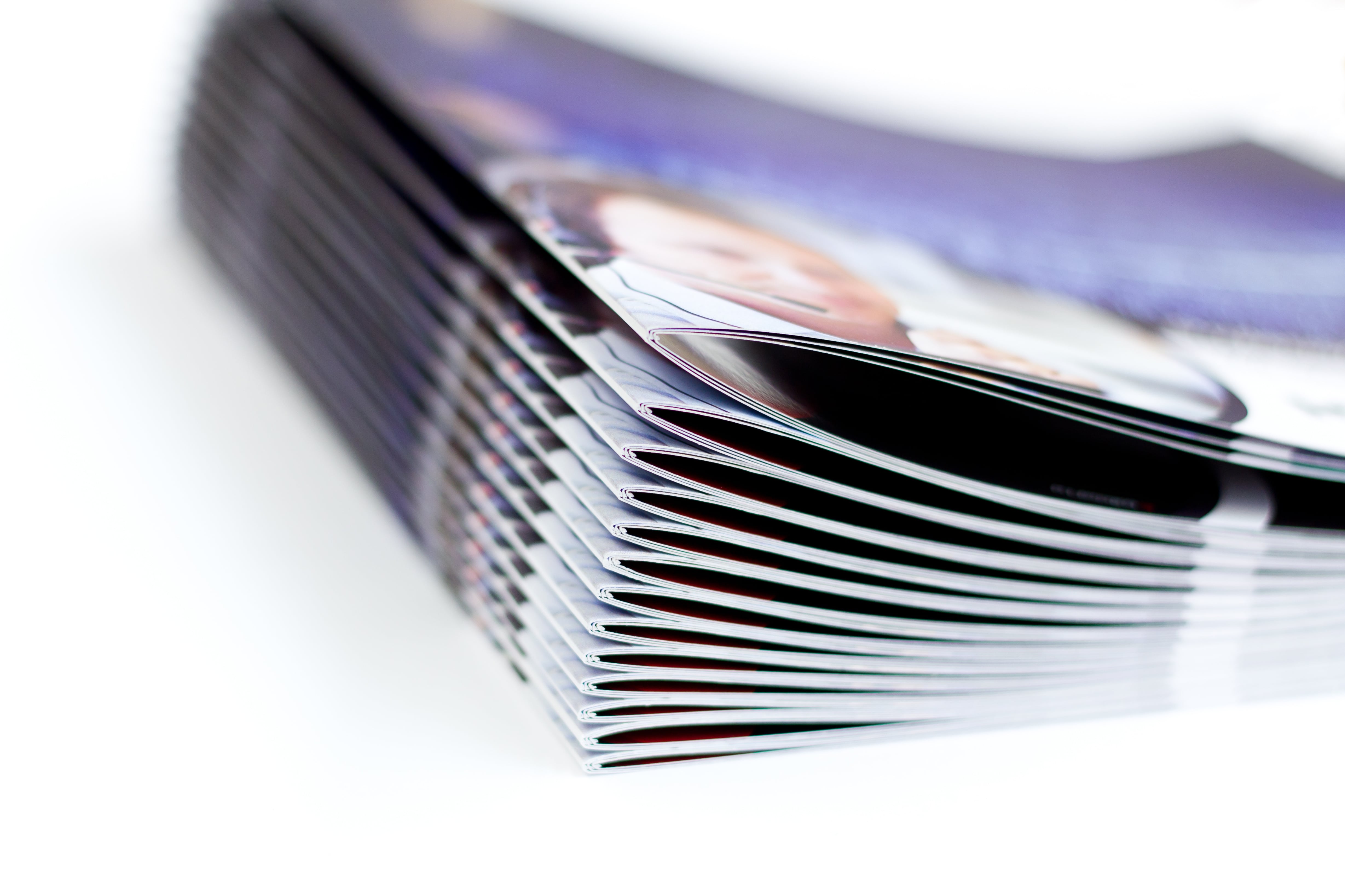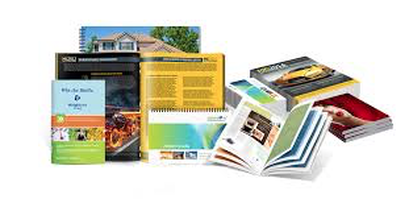How to Choose the Right Binding Style for Your Booklet Printing Needs
Wiki Article
The Important Overview to Comprehending Brochure Printing Options and Techniques
The process of pamphlet printing includes multiple considerations that can substantially affect the end product. From picking the ideal style and size to understanding the subtleties of binding techniques, each choice plays a necessary role. Furthermore, aspects such as paper stock and printing techniques further affect the efficiency of the pamphlet. As one browses these choices, it ends up being critical to understand exactly how they interconnect and what that implies for the overall outcome.Understanding Brochure Sizes and layouts
When considering brochure printing, comprehending the numerous layouts and dimensions offered is important for attaining the wanted presentation. Pamphlets can be generated in numerous styles, consisting of saddle-stitched, spiral-bound, and perfect-bound, each offering distinctive benefits. Common dimensions range from typical letter (8.5 x 11 inches) to smaller sized options like A5 (5.8 x 8.3 inches), enabling for versatility based on content and target audience.Selecting the proper dimension can influence both the format and viewers involvement. Bigger dimensions may match visually driven web content, while smaller styles might be more portable and straightforward. Furthermore, the number of web pages influences the choice of binding technique, as thicker pamphlets may call for stronger bindings. Inevitably, understanding these aspects permits an extra customized method, ensuring that the end product aligns with the intended message and aesthetic, boosting the overall effectiveness of the interaction.Picking the Right Paper Supply

Binding Methods: Factors To Consider and options
When it concerns binding approaches for brochures, several alternatives are readily available, each with distinctive advantages. Saddle stitch binding provides a cost-efficient service for thinner brochures, while excellent binding methods offer an even more polished try to find thicker magazines. Wire-O binding sticks out for its toughness and convenience of use, making it optimal for records that call for flexibility.Saddle Stitch Binding
Saddle stitch binding offers a cost-effective and practical service for constructing pamphlets, making it a popular choice amongst publishers and businesses. This binding technique involves folding sheets of paper in fifty percent and stapling them along the fold line, creating a neat and orderly look. Usually ideal for brochures with a reduced page matter, saddle sewing is perfect for publications, sales brochures, and instructional products. The simplicity of this method permits for fast production and is usually favored for short runs or advertising items. Nevertheless, it is essential to note that saddle stitch binding might not appropriate for thicker pamphlets, as the back may not hold up under enhanced weight. In general, it continues to be a reputable alternative for several printing projects.Perfect Binding Methods
Perfect binding is an extensively made use of strategy that gives a expert and polished surface to pamphlets and publications. This approach entails gluing the web pages together at the spine using a solid adhesive, enabling for a tidy side and the capacity to hold a bigger number of pages compared to saddle sewing. Perfect binding is especially suitable for thicker pamphlets, such as magazines and yearly reports, where a strong, level spine is preferred. Additionally, it supplies the choice for a published cover that can be developed to boost visual allure. However, factors to consider such as web page count, paper weight, and the intended use of the booklet ought to be considered, as they can influence sturdiness and general high quality.Wire-O Binding Alternatives
Wire-O binding, recognized for its longevity and flexibility, uses a superb alternative for brochures that require easy page transforming and a specialist look. This binding approach utilizes a collection of metal loops that hold pages safely, permitting them to exist flat when open. It is particularly ideal for magazines, discussions, and handbooks due to its robust nature. Wire-O binding is readily available in various colors and diameters, fitting various page counts and thicknesses. Additionally, it allows the addition of covers and tabs, enhancing the booklet's overall visual. Factors to consider for Wire-O binding include the choice of cord color, the dimension of the loopholes, and the degree of modification desired, all of which can exceptionally affect the last product's appearance and capability.Digital vs. Offset Printing: Which Is Best for You?
When picking a printing technique for booklets, comprehending the differences in between digital and counter printing is crucial. Digital printing uses modern innovation to generate top notch prints swiftly and economically, making it optimal for brief runs or tasks requiring fast turn-around times. It permits for modification, supplying the capacity to publish on-demand with very little waste.In contrast, counter printing is a traditional technique that succeeds in producing large quantities with regular high quality. It involves transferring ink from a plate to a rubber covering, after that to the paper, which causes lively shades and accurate details. However, balance out printing generally calls for longer configuration times and is more cost-effective for larger volumes.Ultimately, the selection in between digital and offset printing depends upon project requirements, budget plan, and wanted amount. For little, time-sensitive tasks, digital could be the finest option, while offset might be better for larger, high-grade productions.
Designing Your Brochure: Tips and Ideal Practices
When developing a pamphlet, careful interest to format, typeface selection, and color usage can significantly improve its effectiveness. A well-structured design guides the visitor's eye, while proper fonts guarantee readability and communicate the preferred tone. Additionally, efficient use shade can stimulate emotions and highlight essential details, making the overall design extra impactful.Choosing the Right Design
How can one successfully pick the appropriate design for a pamphlet? First, it is necessary to examine the pamphlet's purpose and target market. A tidy, arranged design boosts readability and involvement. Utilizing a grid system can aid in aligning elements continually, producing a professional look. Furthermore, integrating aesthetic pecking order through varying dimensions and positionings of images and message can assist the viewers's eye and emphasize key details. It is additionally important to leave enough white area, which stops overcrowding and enables much better emphasis. Testing different designs via mock-ups can provide insight into just how the layout carries out in real-world situations, making certain that the last item fulfills both aesthetic and practical requirements. Practical Choosing Ideal Fonts A well-chosen font can greatly improve the general style of a pamphlet, enhancing the format and enhancing the content's message. The selection of font styles should think about readability, particularly for body message, as it assures the details is accessible to all readers. Sans-serif fonts are usually liked for digital styles, while serif fonts can lend a traditional feel in printed materials. It's advisable to limit font selections to 2 or 3 to maintain visual comprehensibility. In addition, font style size plays an essential role; headings must be not frustrating yet unique, while body message must fit for analysis. When selecting fonts, placement with the brochure's motif and target market is necessary for efficient communication and visual charm.Reliable Usage of Color
Color functions as a powerful tool in pamphlet design, shaping assumptions and directing visitor emotions. check here It can stimulate feelings of depend on, calmness, or enjoyment, depending on the colors selected. Designers must consider shade theory principles, making sure that the picked palette lines up with the booklet's message and target audience. Using warm colors like red and orange can develop necessity, while cooler tones like eco-friendly and blue foster tranquility.Additionally, contrast plays an important function; corresponding shades can boost readability and aesthetic appeal. Consistency in shade usage across pages further strengthens brand identity and communication. Inevitably, reliable shade execution not just captures focus yet also reinforces the booklet's purpose, making it a vital element of successful layout.
Ending Up Touches: Coatings and Unique Results
While several take into consideration the material and design of a pamphlet one of the most essential components, the ending up touches, such as finishes and unique impacts, play a crucial duty in boosting its general charm. Coatings can offer protection and resilience, making certain that the pamphlet stands up to deterioration. Matte finishes supply an innovative, non-reflective surface, while glossy finishings can make colors show up more distinctive and vivid. Unique effects, like embossing or aluminum foil stamping, add a tactile measurement that can produce an unforgettable impression. These strategies can highlight particular locations, accentuating crucial information or developing visual passion. Furthermore, UV layer can supply a high-shine finish that raises the overall look.Together, these completing touches not just enhance the pamphlet's aesthetic however also connect professionalism and reliability and attention to detail, inevitably leaving an enduring effect on the visitor.Price Considerations for Pamphlet Printing
Comprehending the numerous cost factors to consider for booklet printing is crucial for companies and businesses intending to maximize their budgets. Secret variables influencing expenses consist of the choice of paper, binding, and ink techniques. Greater top quality materials, such as superior paper or specialized inks, commonly increase the general cost. In addition, the dimension and page count of the booklet play a substantial duty; bigger booklets require more resources and time to produce.Another important consideration is the printing method, whether electronic or countered, as each has its very own rates framework and suitability for various amounts. Organizations need to additionally consider layout costs, which can vary based on complexity and using professional services. Ultimately, delivery and handling costs can contribute to the total, particularly for big orders. By assessing these aspects, organizations can make informed decisions that align with their economic capacities while attaining the wanted top quality in their printed products.Regularly Asked Inquiries
What Are the Ecological Effects of Brochure Printing?
The environmental impacts of booklet printing consist of logging from paper production, carbon emissions from transportation, and waste generation from discarded products - Booklet Printing. Lasting practices, such as using recycled paper and environmentally friendly inks, can mitigate these impactsHow Can I Ensure Shade Accuracy in My Brochure?
To ensure color precision in a brochure, one need to make use of adjusted monitors, use specialist shade profiles, perform examination prints, and select high-grade printing solutions that provide shade matching and proofing choices for best outcomes.What Is the Common Turn-around Time for Brochure Printing?
The typical turn-around time for booklet printing differs depending on the intricacy and quantity - Booklet Printing. Typically, it ranges from a few days to 2 weeks, influenced by factors such as printing approaches and completing needsAre There Minimum Order Quantities for Pamphlet Printing?

Can I Publish Pamphlets in Numerous Languages?
Printing booklets in several languages is feasible. Numerous printing solutions supply options for multilingual or bilingual designs, enabling reliable communication. Cautious planning assurances that create components suit numerous languages without compromising check readability or aesthetics. Furthermore, elements such as paper stock and printing methods additional influence the efficiency of the brochure. When taking into consideration brochure printing, understanding the different layouts and dimensions available is vital for accomplishing the preferred presentation. When choosing a printing method for brochures, understanding the differences in between electronic and offset printing is necessary. Additionally, the size and web page count of the pamphlet play a substantial function; bigger booklets call moved here for even more sources and time to produce.Another vital consideration is the printing technique, whether electronic or countered, as each has its own prices structure and viability for different amounts. The environmental impacts of pamphlet printing consist of deforestation from paper manufacturing, carbon discharges from transportation, and waste generation from thrown out products.Report this wiki page